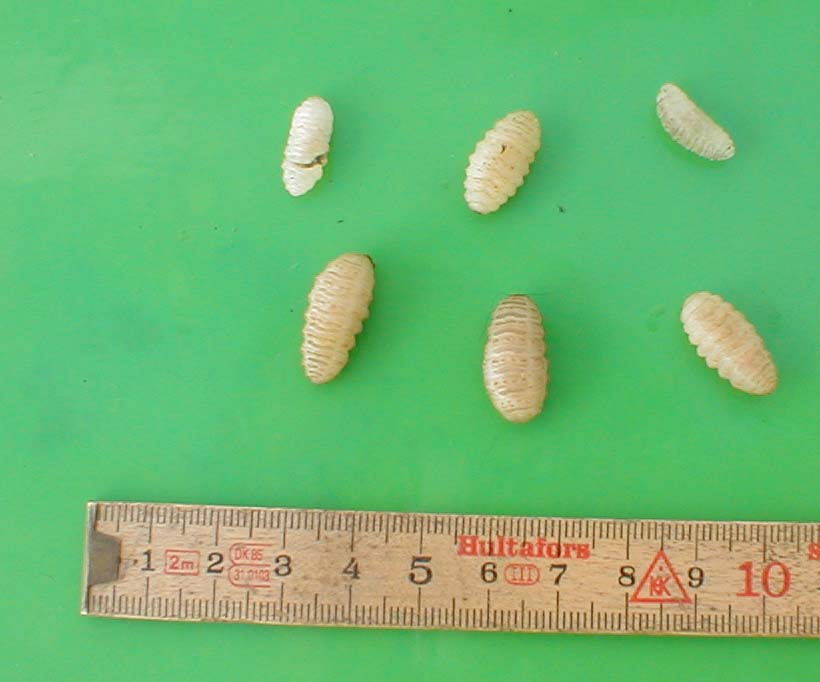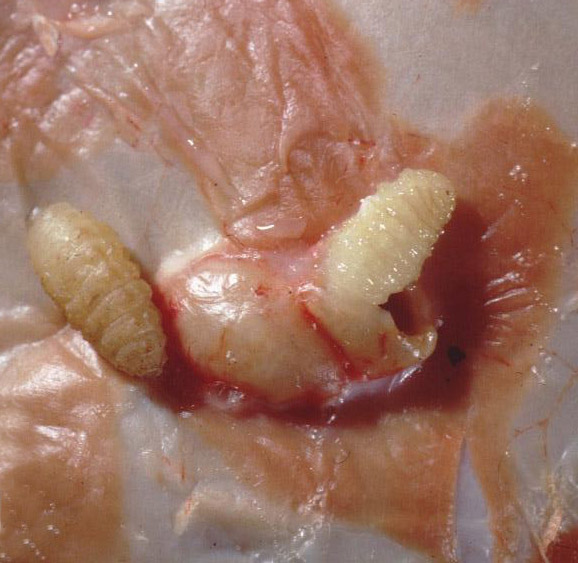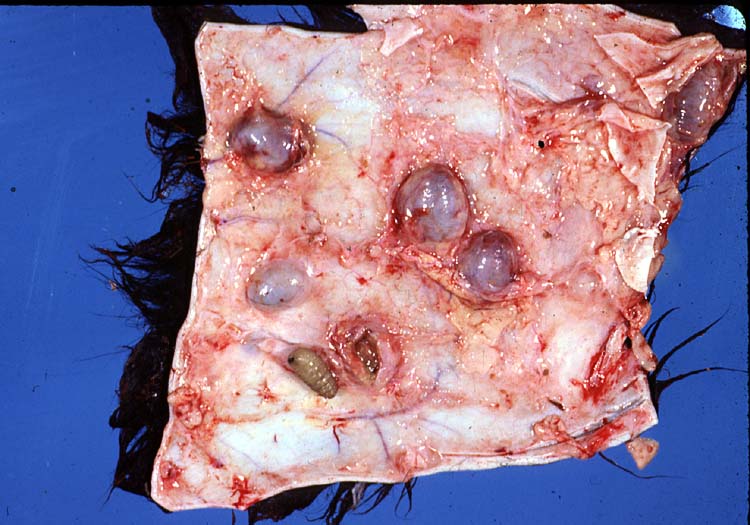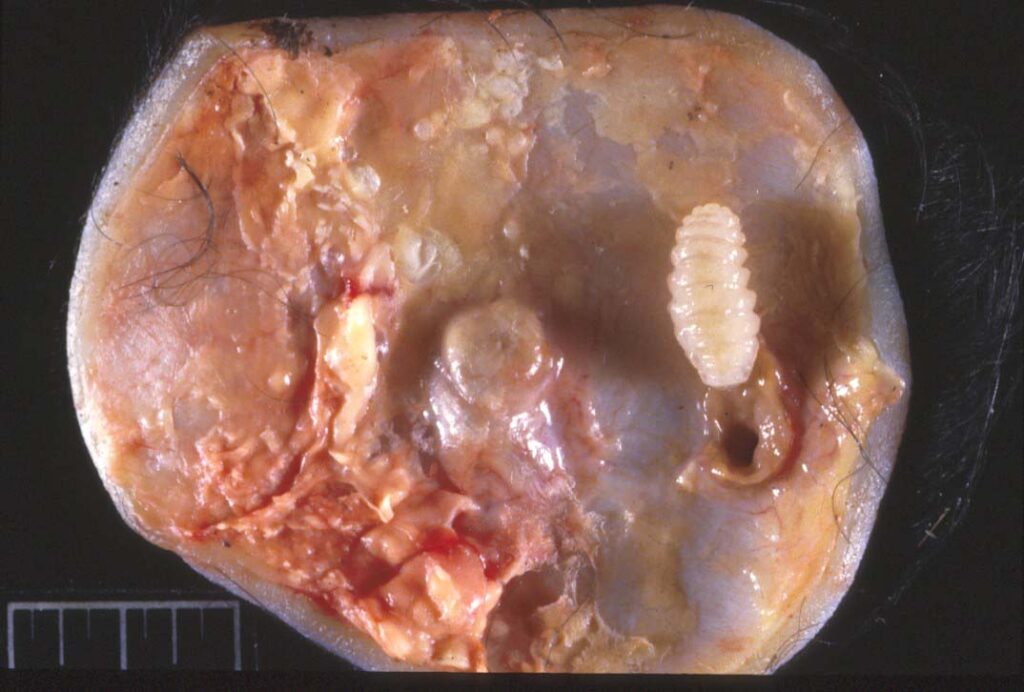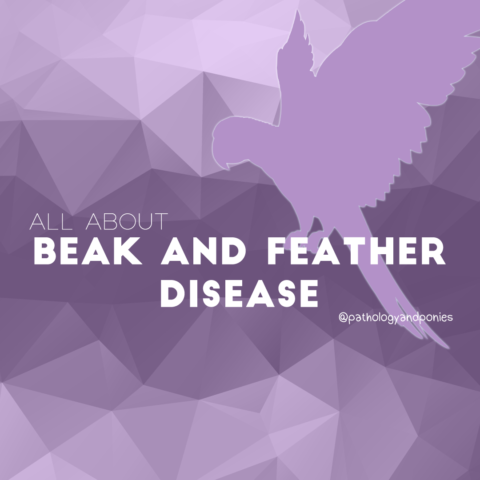Today’s path rounds are on 𝐰𝐚𝐫𝐛𝐥𝐞𝐬!
𝐖𝐡𝐚𝐭 𝐢𝐬 𝐢𝐭?
𝐖𝐚𝐫𝐛𝐥𝐞𝐬 is a condition caused by the larvae of flies migrating in the skin. Once in the skin, these larvae form a nodule with a hole to the external skin surface to allow them to breathe. Gross.
𝐖𝐡𝐨 𝐠𝐞𝐭𝐬 𝐢𝐭?
We most commonly see this disease in cattle!
𝐖𝐡𝐚𝐭 𝐜𝐚𝐮𝐬𝐞𝐬 𝐢𝐭?
There are two main species of fly that cause this disease, 𝐇𝐲𝐩𝐨𝐝𝐞𝐫𝐦𝐚 𝐛𝐨𝐯𝐢𝐬 and 𝐇𝐲𝐩𝐨𝐝𝐞𝐫𝐦𝐚 𝐥𝐢𝐧𝐞𝐚𝐭𝐮𝐦. Both of these flies lay their eggs onto the legs of cattle. The eggs will hatch into larvae, which will burrow into the skin without causing too many issues. These larvae are initially looking for somewhere warm within the cow to hang out over the winter! H. bovis likes to live in the fat near the spinal cord, while H. lineatum likes to live next to the esophagus. In the spring, these larvae migrate to the skin along the back of the animal, and form a nodule. This nodule has a little hole in it that allows them to breathe. Eventually, the larvae will have matured enough to leave their little home, fall off the cow into the soil, and develop into a fly.
𝐖𝐡𝐲 𝐢𝐬 𝐭𝐡𝐢𝐬 𝐚 𝐩𝐫𝐨𝐛𝐥𝐞𝐦?
The nodules of the larvae can be painful, but generally this isn’t enough to cause big issues for the cow. The biggest problem is primarily economic, because these nodules can decrease both the carcass value and the hide value of the animal at processing. So for producers, these little tiny warbles can be a big deal!
𝐇𝐨𝐰 𝐢𝐬 𝐢𝐭 𝐝𝐢𝐚𝐠𝐧𝐨𝐬𝐞𝐝?
Typically this disease is diagnosed by squeezing the nodule to pop out the larvae. That pretty much confirms the diagnosis!
𝐇𝐨𝐰 𝐢𝐬 𝐢𝐭 𝐭𝐫𝐞𝐚𝐭𝐞𝐝?
These larvae can be killed by our typical insecticide products, including pour-on products that a producer might apply to the back of the cow. The timing is the most important aspect fo treatment, because the cattle should be treated immediately following fly season. This allows any larvae that did burrow into the cow to be killed long before they will do their spring migration to the skin. Treating them in the spring once they have already moved is far too late!
𝐏𝐡𝐨𝐭𝐨𝐬
1) What Hypoderma larvae look like.
2-4) Skin samples with the larvae in their little homes.
5) A larvae hanging out next to the esophagus. What species would this larvae be?
6) A poor cow with several Hypoderma nodules, along with the larvae removed from them ![]()
𝐒𝐨𝐮𝐫𝐜𝐞𝐬
Maxie, G. Jubb, Kennedy and Palmer’s Pathology of Domestic Animals, Volume 1. Sixth Edition.
Reichard, M.V. Hypoderma spp. Merck Veterinary Manual 2015.
Photo 1, 2, 6 © Wikimedia Commons contributors Lucyin, Wadudu licensed under CC BY 3.0.
Photos 3-5 © Noah’s Arkive contributors King, Tyler licensed under CC BY-SA 4.0.

